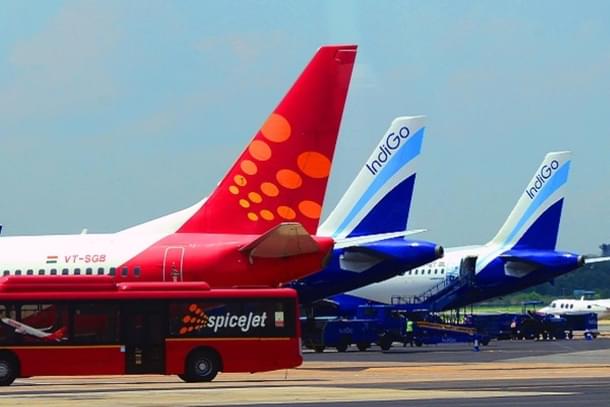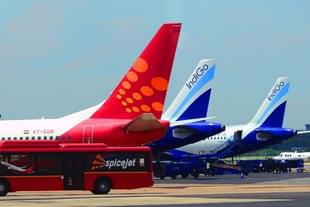Infrastructure
IndiGo's Rahul Bhatia Is Spot On: India Deserves More Than Just Two Major Airlines
Amit Mishra
Aug 09, 2024, 09:00 AM | Updated Aug 08, 2024, 11:07 PM IST
Save & read from anywhere!
Bookmark stories for easy access on any device or the Swarajya app.


India deserves more than just two major airlines, IndiGo promoter and managing director Rahul Bhatia said recently.
“We welcome competition. A country like India deserves more than just two airlines. Just look at China; they have five or six major airlines and some smaller ones,” Bhatia told reporters at an event in New Delhi.
Bhatia's assertions are particularly poignant against the backdrop of India's burgeoning yet turbulent aviation market, where airlines continue to fold. From the collapse of Kingfisher in 2012 to Jet Airways in 2019 and now GoAir, the roster of defunct Indian airlines lengthens ominously.
To provide context, nearly 90 per cent of the market is currently dominated by just two entities. IndiGo commands close to 63 per cent of the market share, while the Tata Group, which owns Air India, AirAsia India, Air India Express, and Vistara, accounts for nearly 25 per cent.
In stark contrast, prominent aviation markets like the United States (US), Brazil, and China boast a more balanced landscape, with three to four major players. For instance, in the US, over two-thirds of the market is almost equally divided among four national carriers: American, Delta, Southwest, and United, with the rest shared by many smaller airlines.
Beyond mere statistics, a scarcity of competition in the face of an emerging duopoly between IndiGo and Tata-led airlines raises many pertinent questions.
One of the most palpable impacts is on domestic ticket prices. In India, where airfares have traditionally been exceedingly low, there is now a noticeable upward trend, driven by surging demand and supply mismatches.
In a rapidly expanding market, if fleet growth fails to match passenger traffic, airfares are bound to escalate. More troublingly, in the absence of robust competition, even with fleet expansion, the pricing power will remain with the two dominant players, IndiGo and Air India.
This consolidation further imperils the survival of smaller airlines in an industry already besieged by high fuel taxes and low profitability. For example, Akasa Air, launched in 2022, holds a modest 4.2 per cent share, while the no-frills carrier SpiceJet has been struggling for some time.
Big players like IndiGo can afford to offer ultra-cheap fares on competitive routes, leveraging their extensive reach to recoup costs on less competitive routes and utilising economies of scale to reduce overheads.
Already the third-largest domestic aviation market by volume, India is on track to become the third-largest overall by 2026, according to the International Air Transport Association (IATA). However, the duopoly could lead to higher domestic airfares, which might reduce demand as consumers opt to fly less and only for essential trips.
Even with India's rapid expansion of aviation infrastructure and the construction of new airports in smaller cities, achieving the government's goal of making air travel accessible to all will remain elusive without more affordable fares.
Thus, when Bhatia says, “Our business is to keep our costs low, provide affordable fares, fill up planes, buy more planes, fill them up again, and keep that cycle going,” he is articulating a nuanced strategy to foster competition.





